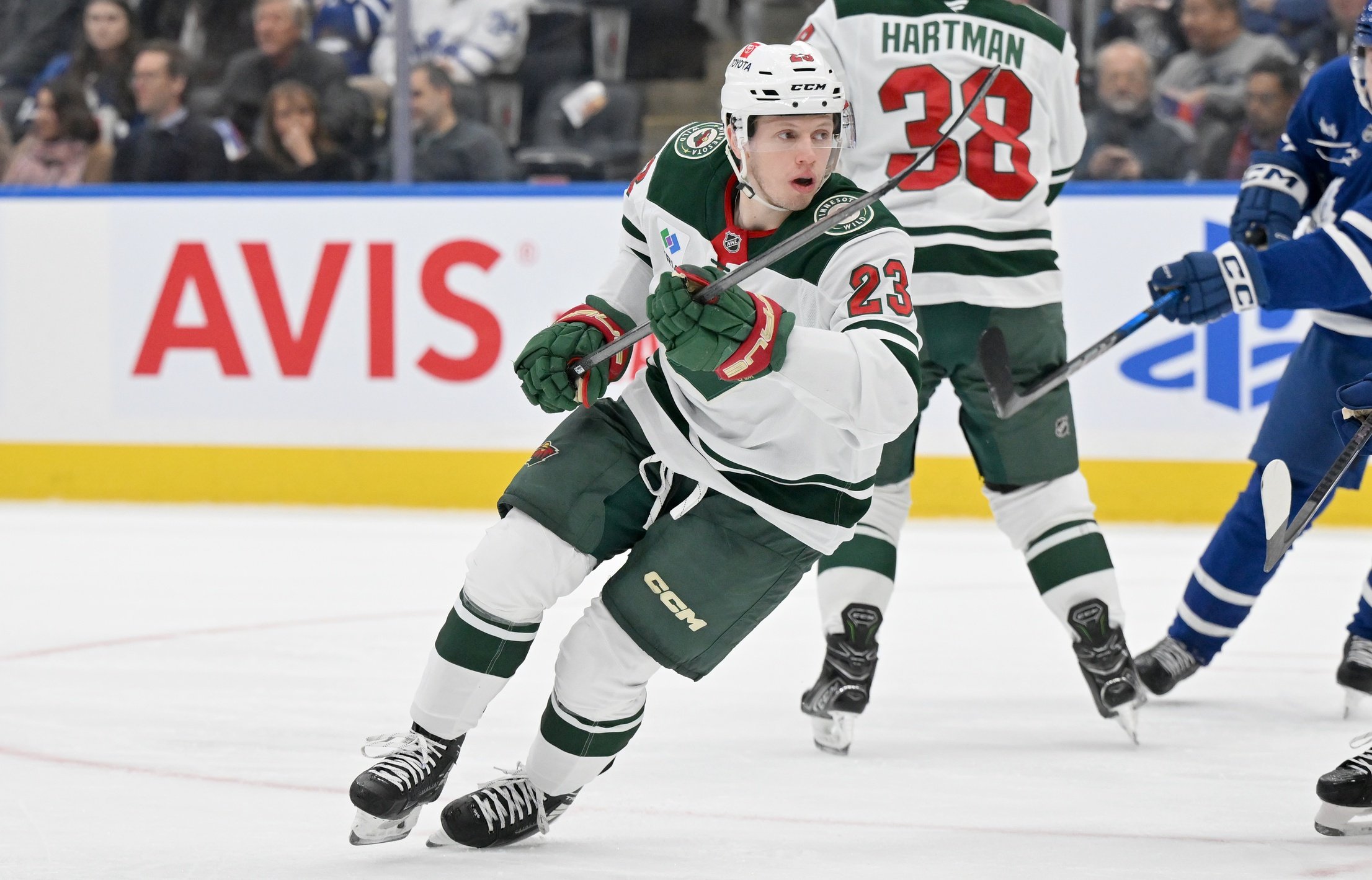
The NHL postseason is officially underway, and the quest for the first Stanley Cup in Minnesota Wild history is on. The Wild are facing off with the heavily favored Vegas Golden Knights and dropped game one in a 4-2 game that was closer than the odds may have indicated. Moving on to the second round could be a tall task, but Minnesota will have a few fascinating storylines regardless of the results.
One of the most vital storylines should be a playoff debut by one of the Wild's core pieces. Marco Rossi will see his first NHL postseason action in his second full season. As a young player blossoming into a valuable piece of the lineup, this playoff should serve as a coming-out party for the young center. However, it feels like another referendum on whether Rossi has a future with the team.
Despite his strong results (24 goals, 36 assists), Rossi constantly finds himself in the middle of odd conversations regarding his future with the team. Bill Geurin insists the team isn't looking to trade Rossi, but The Athletic’s Michael Russo states there's over a 70% chance he'll be traded this summer.
Rossi is a pending restricted free agent and needs a new contract, but the Wild should have plenty of money to spend, with the Zach Parise and Ryan Suter deals finally coming off the books. With growth in his second year and being one of the most durable players on the team, it leaves only one culprit for the uncertainty surrounding Rossi's Wild status.
He's small.
At just 5-foot-9, 182 pounds, Rossi is far below the NHL average of 6-foot-1.5, 201 pounds.
Because of this, Rossi has had to endure constant questions of Can he perform in the playoffs? It's time to find out.
How would we measure Rossi's success in the playoffs, though? What proves that he can withstand the rigors of postseason hockey? The best way would be to evaluate his consistency. Will he carry his style of play from the regular season over without significantly changing who he is as a player?
While many of the headlines about Rossi surround his size, he plays a game that should translate to the postseason. His game is predicated on net-front presence, high-compete levels, and being highly engaged in games. Bill Guerin complimented this aspect of Rossi's game earlier in the season.
Just his pace of play, his engagement every night, he has been one of our best players. I think the biggest thing, too — and I know this is the hardest thing for young players — is his consistency. He's one of our better net-front presence guys. And he's not the biggest guy, but he stands in there, and that's why he's getting rewarded. … He's doing all the right stuff.
Rossi's stats certainly prove that appraisal to be true. The center became the Wild's premier net-front presence this season. His offensive game was especially potent in the most dangerous areas of the ice.
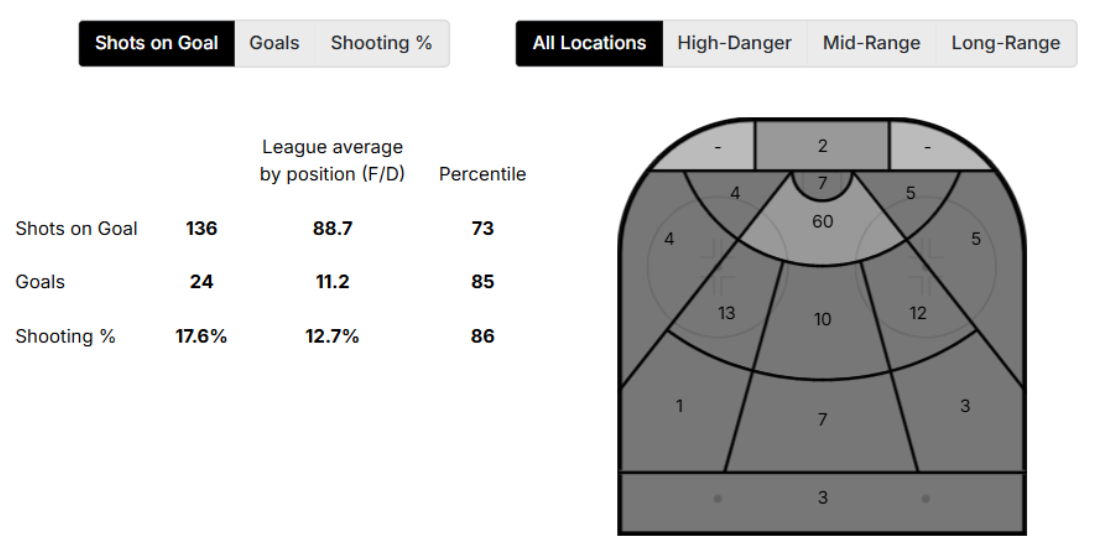
(Source: NHL EDGE)
Of Rossi’s 136 shots on goal in the regular season, 67 came from an area that NHL EDGE considers to be high-danger shots on net. That ranks him near the top of the league in the 92nd percentile. Rossi’s elite ability to generate chances from the front of the net also pans out where he scores his goals.
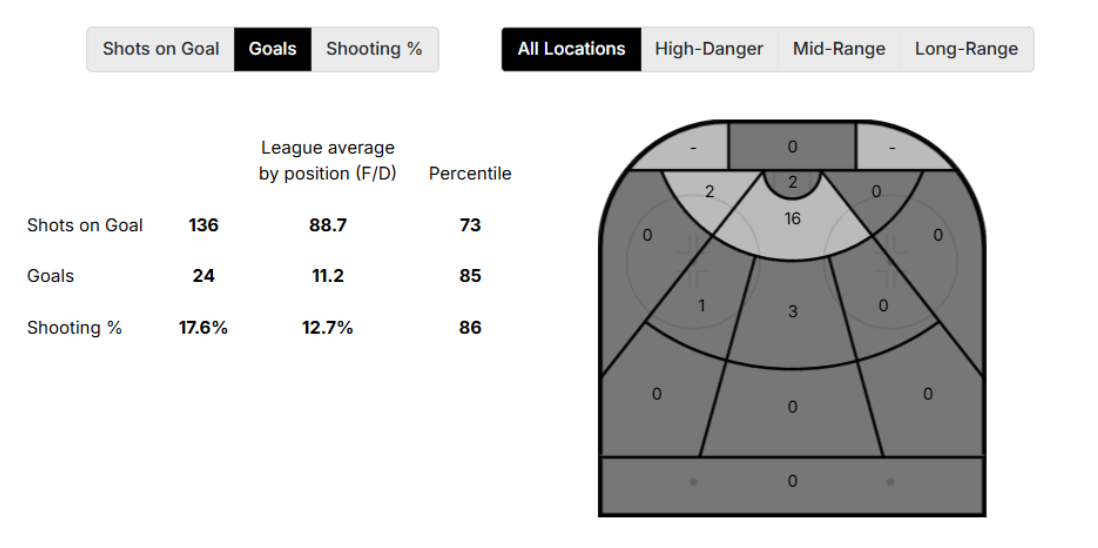
(Source: NHL EDGE)
Of Rossi’s 24 goals, he scored 18 from those precious net-front opportunities. His 18 high-danger goals ranked in the 94th percentile in the NHL, making him one of the league’s true elite net-front presences.
For comparison, Matt Boldy scored 27 goals during the 2024-25 regular season. Only nine came from the high-danger area that Rossi dominates. Boldy is known more as a perimeter player, and that style works for him, but at 6-foot-2, 201 pounds, he’s much more physically gifted than Rossi. Despite his size, Rossi finds a way to the front of the net.
The Vegas Golden Knights are the perfect opponent for Rossi to prove his mettle against. Vegas is one of the biggest teams in the league, with a roster that averages 6-foot-2, 205 pounds, the second-biggest in the league. The Knights are particularly big on the blue line and at the center position.
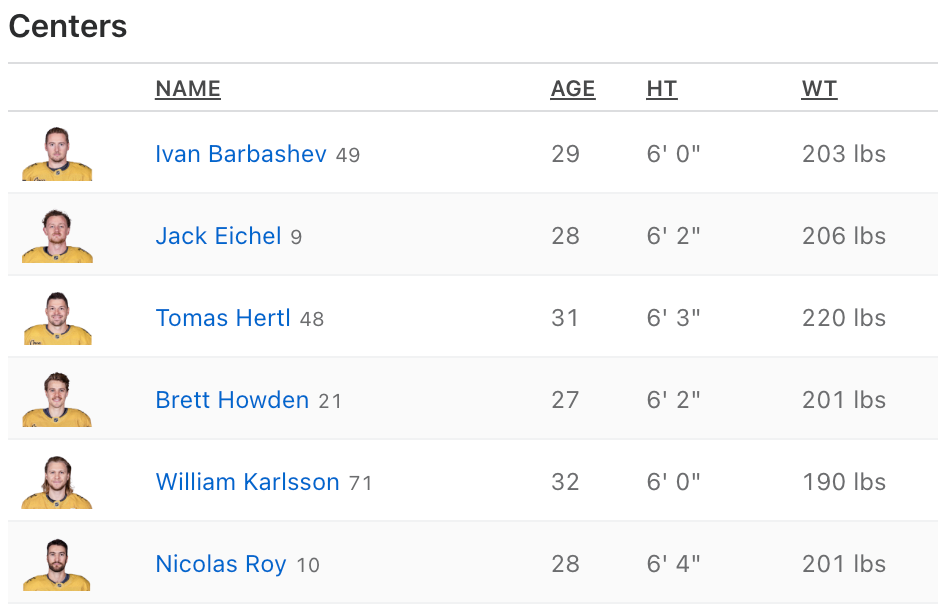
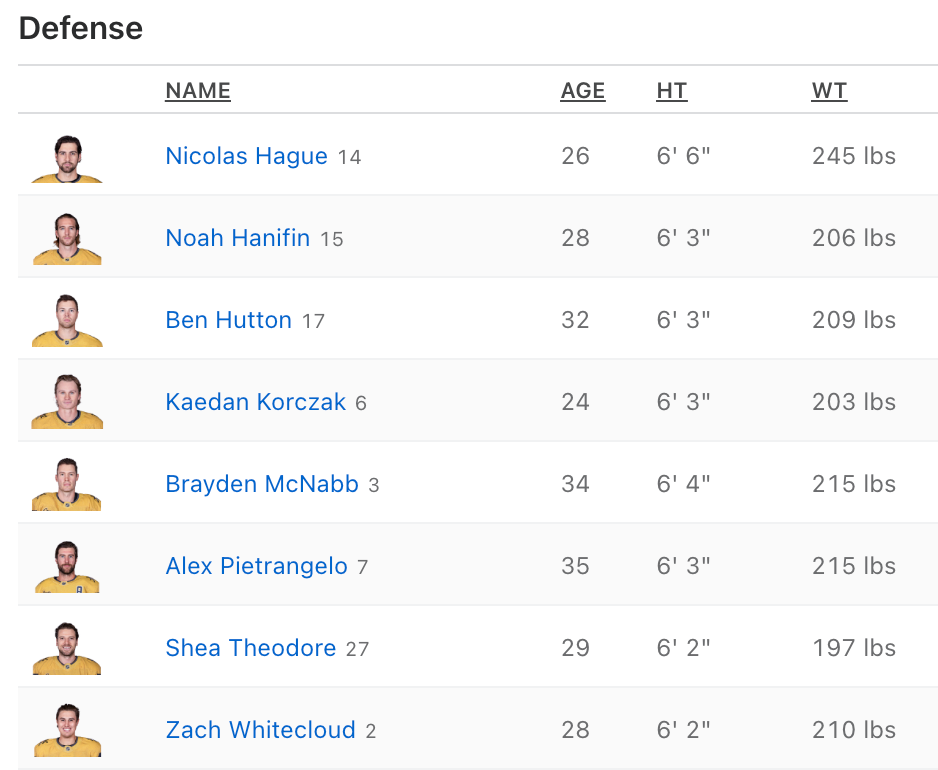
(Source: ESPN.com)
If Rossi can produce against that lineup, it will go a long way toward proving that his size isn’t an issue in the playoffs. He must continue generating high-danger scoring chances, playing with his trademark tenacity. Rossi’s ability to win board battles has improved significantly over his NHL career, which will be another crucial aspect of this series.
Despite his size, Rossi has the tools to excel in a playoff environment, but it remains to be seen if he’ll even have the chance. If his deployment in Game 1 is any indication, Rossi may be in for a challenging series.
During the regular season, Rossi averaged 18:15 of time on ice per game. He most commonly played on the top line with the unit of Boldy-Rossi-Zuccarello or Kaprizov-Rossi-Zuccarello. Part of his heavy usage was due to injuries, especially Joel Eriksson Ek’s. Now that everyone is healthy, Rossi’s minutes will inevitably decrease slightly.
Not only did Rossi find himself on the ice for only 12:10, but he also played on the third line, centering Marcus Foligno and Gustav Nyquist. Instead of Rossi playing in the top six, Frederick Gaudreau took that spot.
Gaudreau has had a bounce-back season and is likely being rewarded for that. Still, it’s hard to view Rossi’s move to the third line as anything but a demotion after scoring 60 points and playing with the top unit for most of the season.
Gaudreau’s partnership in the top six with Marcus Johansson and Mats Zuccarello didn’t go smoothly. That line performed the worst of any Minnesota line in Game 1, giving up an expected .844 goals against while being outshot 15-7.
However, Rossi’s line also didn’t play great. They accomplished nothing offensively (.009 expected goals for in 7:09 TOI). Rossi’s only shot on goal in the game came from 23.9 feet away from the net, a much lower-danger area than his regular-season average of 23.4 feet from the net.
Marco Rossi Regular Season vs. Game 1
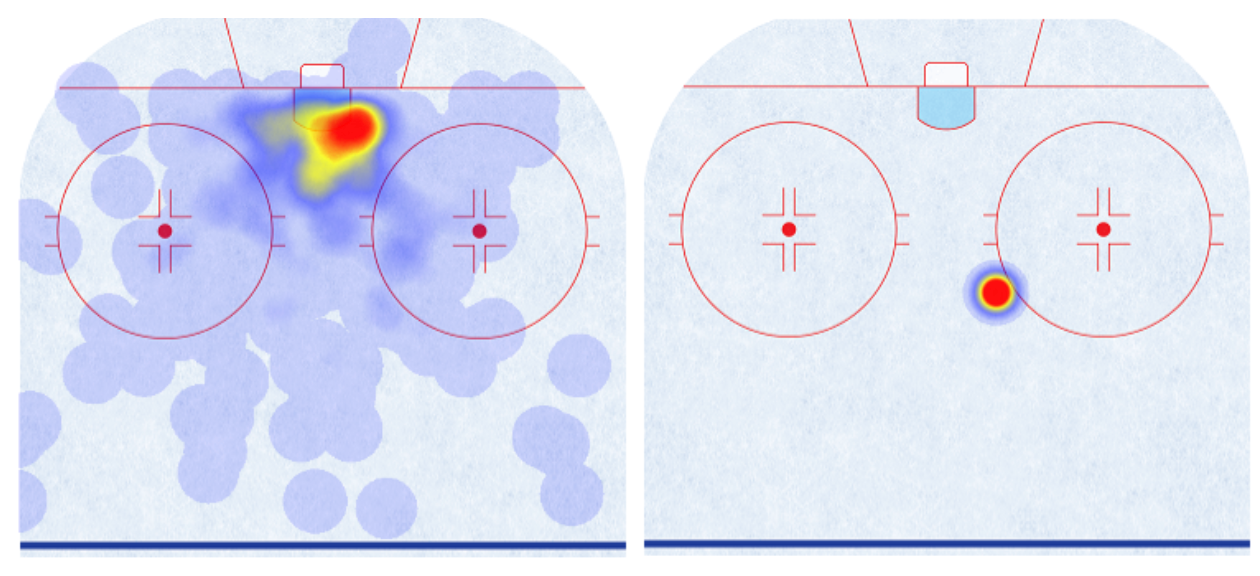
Source: Moneypuck.com
Foligno - Rossi - Nyquist did play adequately defensively (0.192 expected goals against, lowest of any of the forward lines). Still, it’s a hard pill to swallow seeing Rossi deployed in a way that doesn’t give him the chance to succeed.
If the Wild want to get anywhere in this series or clarify their future direction, Rossi must play in the top six in Game 2 and beyond. If the Wild can’t find anything better for a 23-year-old 60-point center to do than play on the team’s low-event line during the playoffs, it’s time to start writing the “What can the Wild get for Marco Rossi?” articles again.
Think you could write a story like this? Hockey Wilderness wants you to develop your voice, find an audience, and we'll pay you to do it. Just fill out this form.
-
 2
2

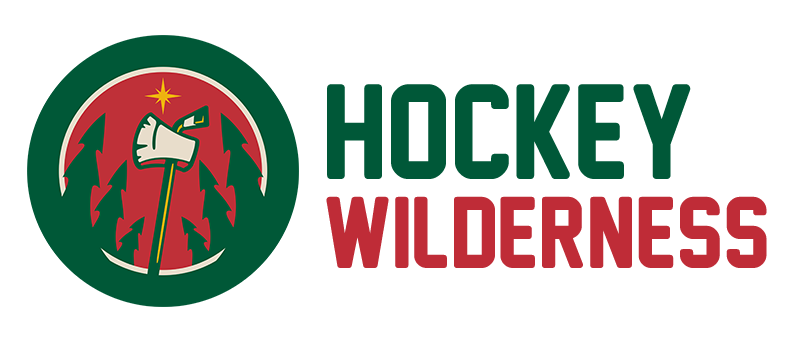






Recommended Comments
Join the conversation
You can post now and register later. If you have an account, sign in now to post with your account.
Note: Your post will require moderator approval before it will be visible.